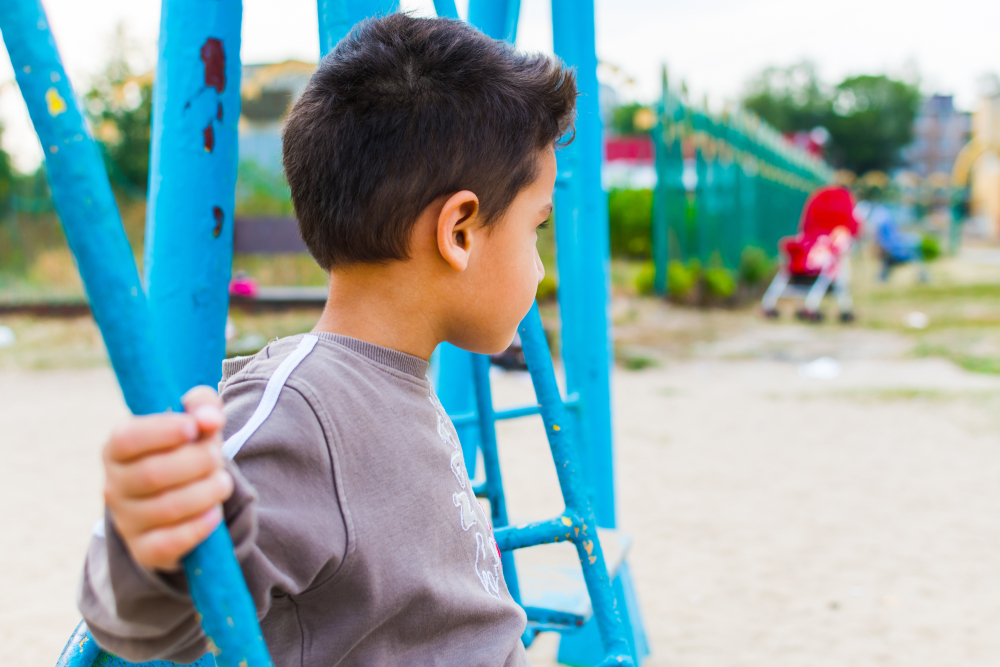Awareness
He’s been in foster care for most of his life. At 13, all Tim wants is a chance to be someone’s son.

At just 13 years old, Tim has already lived a lifetime of uncertainty. Shuffled between foster homes for most of his childhood, he’s grown used to packing his belongings into a small bag, never staying long enough to call anywhere “home.” But behind his quiet demeanor lies a hope as unshakable as it is simple: Tim dreams of being someone’s son.
For many children, having a family is an assumed constant—an invisible anchor that offers love, security, and a sense of belonging. But for Tim, who has spent years navigating the instability of the foster care system, the idea of being part of a family feels like a distant dream. His story is not just his own—it’s a poignant reminder of the thousands of children in foster care who share the same wish for stability and love.

The Reality of Foster Care: A System Stretched Thin
The foster care system was designed to provide safety and support for children who, for various reasons, cannot stay with their biological families. But in practice, the system is often overwhelmed and under-resourced. With more than 400,000 children in foster care across the United States, the demand far exceeds the available resources, leaving many children stuck in temporary arrangements that lack the emotional stability they desperately need.
For children like Tim, these temporary arrangements can feel like a revolving door. Moving from one home to the next creates a sense of instability that makes it difficult to form lasting bonds. Caseworkers, though well-meaning, are often juggling overwhelming caseloads, which means individualized attention is rare. As a result, children in foster care can feel like numbers in a system rather than individuals with unique needs and dreams.
The psychological impact is profound. Studies show that children who grow up in foster care are at higher risk for mental health challenges, such as anxiety and depression, as well as academic difficulties and struggles with self-esteem. Without the steady foundation of a permanent home, many children face an uphill battle to build a sense of identity and security. Tim’s story is just one example of how these systemic shortcomings can leave children feeling invisible and yearning for something more.
Tim’s Journey: A Life Without Roots
Tim’s life in foster care has been a series of transitions—new faces, unfamiliar rooms, and the lingering uncertainty of what comes next. Since entering the system as a young boy, he has moved from one foster home to another, carrying his belongings in a bag and bracing himself for the emotional toll of starting over yet again. For Tim, the concept of “home” is something he’s yet to experience, and the idea of permanence feels like a far-off dream.
Each move has left its mark. Tim has learned to adapt quickly to new environments, but this adaptability comes at a cost. Forming deep connections is difficult when you’re constantly preparing for the next upheaval. The lack of stability has created a void—an emotional absence that no temporary placement can fill. Tim has shared how birthdays and holidays, moments that should be filled with joy and family, often pass by like any other day, a stark reminder of what he’s missing.
Yet, despite the challenges, Tim remains hopeful. He dreams of a home where he can finally unpack for good—a place where he can hang up his coat, mark his height on the wall, and hear someone say, “I’m proud of you, son.” For Tim, it’s not about material comfort; it’s about belonging. He longs for the small moments most people take for granted: sitting down for a family dinner, cheering from the sidelines at a soccer game, or having someone to turn to when life gets tough.

Tim’s resilience is a testament to the strength that many children in foster care develop out of necessity. But his story also highlights the immense emotional toll of growing up without roots. While he’s learned to endure the instability, he’s never stopped wishing for a chance to experience the love and support that only a family can provide. His journey underscores a harsh reality for older children in the system—each passing year makes adoption less likely, and yet the need for connection becomes all the more urgent.
For Tim, the clock is ticking. At 13, he’s entering a critical time when the window for adoption begins to narrow even further. But in his heart, he believes there’s a family out there—a place where he can finally stop running, stop waiting, and simply be a son.
What He Wants: A Chance to Belong
For Tim, the idea of being someone’s son is not about grand gestures or extravagant dreams—it’s about the simple, everyday moments that make a house feel like a home. He yearns for a sense of belonging, a place where he can wake up each morning knowing that he’s loved and wanted, not as a guest or a temporary ward, but as a permanent member of a family.
When Tim talks about his dreams, they’re filled with the kinds of experiences most of us might take for granted. He imagines sitting at the dinner table, sharing stories about his day with people who genuinely care. He dreams of hearing the words “goodnight” before he falls asleep and waking up to the sounds of a bustling household. For Tim, these small, ordinary moments are what define a family—the steady presence of love and support that transforms a house into a home.
What’s particularly moving about Tim’s wish is how deeply he values the concept of being a son. To him, it’s not just a label; it’s an identity. He doesn’t just want a family to live with; he wants to be part of a family, to have a place in the story they write together. Tim envisions learning from a parent, whether it’s how to ride a bike or simply how to navigate the ups and downs of life. He wants to be cheered on during his victories and comforted during his defeats. These are the moments that build a child’s sense of self-worth, and for Tim, they represent a future filled with hope and possibility.
Yet, as hopeful as Tim remains, he understands the obstacles. He knows that older children in foster care often face more challenges when it comes to finding adoptive families. Many potential parents are looking to adopt younger children, leaving teens like Tim to wait even longer. But Tim is undeterred. His unwavering belief that a family is out there for him is a testament to his resilience and his faith in the possibility of love. For Tim, being someone’s son isn’t just a dream—it’s his deepest wish, and he holds onto it with a strength that inspires everyone who hears his story.
The Broader Picture: Children Waiting for Homes
Tim’s story is deeply personal, but it’s also representative of a much larger issue. Across the United States, over 100,000 children in foster care are currently waiting to be adopted. While the foster system provides temporary care, it often struggles to deliver the permanence and stability that children like Tim desperately need. For older kids and teens, the odds of finding a forever family diminish with each passing year.
Statistics reveal a stark reality: children over the age of 8 are significantly less likely to be adopted than younger children. By the time they reach their teens, many kids in foster care face the grim possibility of aging out of the system without ever being placed in a permanent home. For these children, life without a family can be an uphill battle. They’re more likely to face challenges such as homelessness, unemployment, and mental health struggles compared to their peers who are adopted or grow up in stable family environments.
Experts in child development emphasize the importance of a stable home life for fostering emotional and social growth. According to Dr. Sherrie Bourg Carter, a psychologist specializing in childhood trauma, “The love and support of a family can help a child heal from the scars of instability and uncertainty. It’s not just about providing shelter—it’s about creating a foundation for a thriving future.” For children like Tim, the absence of that foundation can make it difficult to form healthy relationships and establish a strong sense of self.
Programs and advocacy groups are working tirelessly to change this narrative. Organizations like AdoptUSKids and local adoption agencies aim to match children with families who are open to adopting older kids and teens. Campaigns like “Wednesday’s Child,” which highlights children waiting for adoption, also play a crucial role in bringing attention to kids like Tim. These efforts are making a difference, but there’s still much work to be done to ensure that every child has a chance to experience the love and stability they deserve.
Tim’s story reminds us that behind every statistic is a child with a unique set of dreams, fears, and hopes for the future. It’s a call to action—not just for prospective adoptive parents, but for communities as a whole—to support programs and policies that give children in foster care the best chance at finding their forever families.
Typos, corrections and/or news tips? Email us at Contact@TheMindUnleashed.com
